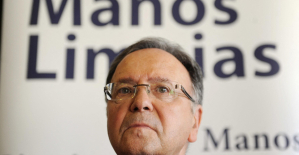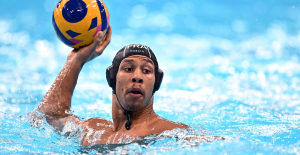The offices will be open from 8:00 a.m. to 8:00 p.m. (7:00 a.m. to 7:00 p.m. GMT) and the first results expected around 9:30 p.m. in this election caused by the "mink crisis" which has kept the country in suspense for more than a year.
A party supporting the minority government had threatened to bring him down if he did not call an election to ensure the confidence of voters after the decision, later declared illegal, to slaughter the country's huge herd of mink to fight against the coronavirus.
The latest polls credit the "red bloc" (left) led by Ms Frederiksen with 47.1 to 49.1% against 40.9 to 43.6% for the "blues", an informal alliance of liberal and conservative parties with three populist formations.
According to these opinion polls, no bloc will be able to govern without the Moderates, a centrist party created this year by former liberal leader Lars Løkke Rasmussen, twice Prime Minister in the past, which would gather up to 10% of the vote.
"If there is no majority, which seems to be looming, the Moderates are essential to form a government", summarized with AFP Rune Stubager, professor of political science at the University of Aarhus.
Both camps have therefore multiplied the calls of the foot.
The current Prime Minister has taken up the idea of a coalition government between left and right, led by herself, and has said she is ready to reform the health system to accommodate the Moderates.
For his part, the leader of the liberals called for the return of Mr. Løkke Rasmussen to his former party.
"If you want to (achieve) the things that you dream of, and which were grown in our old common garden, then come home," said Jakob Ellemann-Jensen during one of the last televised debates.
- Electoral volatility -
After a campaign dominated by the climate, inflation and the health system, nearly a quarter of voters are still undecided.
"There is great volatility among Danish voters, about 40% change parties," noted political scientist Mr Stubager.
Antesa Jensen votes for the first time but is hesitant.
"I don't know yet who I will vote for, probably Alternative or the Radicals", two leftist formations, she said.
In the programs, "the question of immigration is prohibitive for me", explains the forties.
American, she has just obtained Danish nationality after an exhausting process, symbol of the restrictive policy of the Scandinavian country in terms of welcoming foreigners.
Jealous of its prosperity and its cohesion, Denmark has been a champion of rigorous migration for more than 20 years, regardless of the bloc in power.
Apostle of a "zero refugee" policy, the current social-democratic government is working on the establishment in Rwanda of a management center for asylum seekers on the British model.
The 5.9 million Danes seem more deeply concerned about the climate.
The Nordic country's goal is to reduce its emissions by 70% by 2030, compared to 55% in the EU as a whole, and to achieve climate neutrality by 2050, like all European countries.
On Sunday, some 50,000 people, including the Prime Minister, gathered for the "Climate March".
“This election is very important for what is going to happen with the Earth in the future. And I think it is important that the climate is the number one priority for politicians and voters,” recalled one of the protesters, Esther Ronn, 23-year-old student.
The left has promised a law on biodiversity and the social democrats intend to introduce a carbon tax on agriculture, a measure supported by the majority of the other parties.
On the right, the liberal party is betting on the development of green solutions while "New Right" (extreme right) is open to the construction of nuclear power plants.
In total, no less than 14 parties presented lists for the 179 seats in Folketinget, four of which are reserved for the overseas territories: Greenland and the Faroe Islands.
Voter turnout is traditionally high in Denmark. In 2019, 84.6% of the approximately 4.2 million voters came to vote.

 Hamas-Israel war: US begins construction of pier in Gaza
Hamas-Israel war: US begins construction of pier in Gaza Israel prepares to attack Rafah
Israel prepares to attack Rafah Indifference in European capitals, after Emmanuel Macron's speech at the Sorbonne
Indifference in European capitals, after Emmanuel Macron's speech at the Sorbonne Spain: what is Manos Limpias, the pseudo-union which denounced the wife of Pedro Sánchez?
Spain: what is Manos Limpias, the pseudo-union which denounced the wife of Pedro Sánchez? Spain is the country in the European Union with the most overqualified workers for their jobs
Spain is the country in the European Union with the most overqualified workers for their jobs Parvovirus alert, the “fifth disease” of children which has already caused the death of five babies in 2024
Parvovirus alert, the “fifth disease” of children which has already caused the death of five babies in 2024 Colorectal cancer: what to watch out for in those under 50
Colorectal cancer: what to watch out for in those under 50 H5N1 virus: traces detected in pasteurized milk in the United States
H5N1 virus: traces detected in pasteurized milk in the United States Private clinics announce a strike with “total suspension” of their activities, including emergencies, from June 3 to 5
Private clinics announce a strike with “total suspension” of their activities, including emergencies, from June 3 to 5 The Lagardère group wants to accentuate “synergies” with Vivendi, its new owner
The Lagardère group wants to accentuate “synergies” with Vivendi, its new owner The iconic tennis video game “Top Spin” returns after 13 years of absence
The iconic tennis video game “Top Spin” returns after 13 years of absence Three Stellantis automobile factories shut down due to supplier strike
Three Stellantis automobile factories shut down due to supplier strike A pre-Roman necropolis discovered in Italy during archaeological excavations
A pre-Roman necropolis discovered in Italy during archaeological excavations Searches in Guadeloupe for an investigation into the memorial dedicated to the history of slavery
Searches in Guadeloupe for an investigation into the memorial dedicated to the history of slavery Aya Nakamura in Olympic form a few hours before the Flames ceremony
Aya Nakamura in Olympic form a few hours before the Flames ceremony Psychiatrist Raphaël Gaillard elected to the French Academy
Psychiatrist Raphaël Gaillard elected to the French Academy Skoda Kodiaq 2024: a 'beast' plug-in hybrid SUV
Skoda Kodiaq 2024: a 'beast' plug-in hybrid SUV Tesla launches a new Model Y with 600 km of autonomy at a "more accessible price"
Tesla launches a new Model Y with 600 km of autonomy at a "more accessible price" The 10 best-selling cars in March 2024 in Spain: sales fall due to Easter
The 10 best-selling cars in March 2024 in Spain: sales fall due to Easter A private jet company buys more than 100 flying cars
A private jet company buys more than 100 flying cars This is how housing prices have changed in Spain in the last decade
This is how housing prices have changed in Spain in the last decade The home mortgage firm drops 10% in January and interest soars to 3.46%
The home mortgage firm drops 10% in January and interest soars to 3.46% The jewel of the Rocío de Nagüeles urbanization: a dream villa in Marbella
The jewel of the Rocío de Nagüeles urbanization: a dream villa in Marbella Rental prices grow by 7.3% in February: where does it go up and where does it go down?
Rental prices grow by 7.3% in February: where does it go up and where does it go down? “Deadly Europe”, “economic decline”, immigration… What to remember from Emmanuel Macron’s speech at the Sorbonne
“Deadly Europe”, “economic decline”, immigration… What to remember from Emmanuel Macron’s speech at the Sorbonne Sale of Biogaran: The Republicans write to Emmanuel Macron
Sale of Biogaran: The Republicans write to Emmanuel Macron Europeans: “All those who claim that we don’t need Europe are liars”, criticizes Bayrou
Europeans: “All those who claim that we don’t need Europe are liars”, criticizes Bayrou With the promise of a “real burst of authority”, Gabriel Attal provokes the ire of the opposition
With the promise of a “real burst of authority”, Gabriel Attal provokes the ire of the opposition These French cities that will boycott the World Cup in Qatar
These French cities that will boycott the World Cup in Qatar Judo: Blandine Pont European vice-champion
Judo: Blandine Pont European vice-champion Swimming: World Anti-Doping Agency appoints independent prosecutor in Chinese doping case
Swimming: World Anti-Doping Agency appoints independent prosecutor in Chinese doping case Water polo: everything you need to know about this sport
Water polo: everything you need to know about this sport Judo: Cédric Revol on the 3rd step of the European podium
Judo: Cédric Revol on the 3rd step of the European podium


















